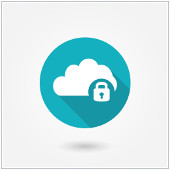4 Tips for better server management
Published May 19, 2017
 With so much technology moving to the cloud, onsite servers aren’t getting as much attention as they used to. Optimizing this critical piece of business technology is no small task, but there are a few simple things you can do to ensure the success of your in-house servers.
With so much technology moving to the cloud, onsite servers aren’t getting as much attention as they used to. Optimizing this critical piece of business technology is no small task, but there are a few simple things you can do to ensure the success of your in-house servers.
 One of the most common ways hackers infiltrate networks is by using phishing scams — fraudulent emails to trick unwitting users into giving away login credentials or downloading malware. Although this is the oldest trick in a hacker’s arsenal, it’s still an incredibly effective attack method. To blunt the potency of these scams, Google released an anti-phishing feature for Gmail apps on Android devices. Read on below to find out how it works.
One of the most common ways hackers infiltrate networks is by using phishing scams — fraudulent emails to trick unwitting users into giving away login credentials or downloading malware. Although this is the oldest trick in a hacker’s arsenal, it’s still an incredibly effective attack method. To blunt the potency of these scams, Google released an anti-phishing feature for Gmail apps on Android devices. Read on below to find out how it works. Virtualization is a great way to save money and increase the efficiency of your existing IT hardware, but how exactly do you implement a virtualization solution? There are several vendors that provide software solutions, but there’s one almost everyone has already worked with: Microsoft. In its latest operating system release there are a few ways to virtualize your office.
Virtualization is a great way to save money and increase the efficiency of your existing IT hardware, but how exactly do you implement a virtualization solution? There are several vendors that provide software solutions, but there’s one almost everyone has already worked with: Microsoft. In its latest operating system release there are a few ways to virtualize your office. With a quick Google search, numerous VoIP distributors instantly appear. The problem is knowing whether they will meet your business’s needs. To attract consumers, these professionals throw around superlatives such as ‘the best’ or ‘world-class’ — but that doesn’t always mean they are. Before committing to a distributor, here are some things you should take into consideration:
With a quick Google search, numerous VoIP distributors instantly appear. The problem is knowing whether they will meet your business’s needs. To attract consumers, these professionals throw around superlatives such as ‘the best’ or ‘world-class’ — but that doesn’t always mean they are. Before committing to a distributor, here are some things you should take into consideration: Did you know that the applications you use learn something new about you every day? If you’re using any of the G Suite applications, their machine learning algorithms — a set of mechanisms that study usage patterns — derive data based on your work patterns and frequently used files, and then make sensible suggestions accordingly. Don’t worry about your system’s security, as this is just part of Google’s efforts to enhance the overall user experience.
Did you know that the applications you use learn something new about you every day? If you’re using any of the G Suite applications, their machine learning algorithms — a set of mechanisms that study usage patterns — derive data based on your work patterns and frequently used files, and then make sensible suggestions accordingly. Don’t worry about your system’s security, as this is just part of Google’s efforts to enhance the overall user experience. Microsoft has commercially released new products and upgrades that will secure company information. The threat intelligence and data governance features are designed for businesses that adhere to strict regulatory guidelines and need an extra layer of protection against cyberattacks. Here’s a detailed look at what these additions can do for your business.
Microsoft has commercially released new products and upgrades that will secure company information. The threat intelligence and data governance features are designed for businesses that adhere to strict regulatory guidelines and need an extra layer of protection against cyberattacks. Here’s a detailed look at what these additions can do for your business. Updates to the Windows operating system have a controversial reputation. On the one hand, Microsoft issues them frequently to combat cybersecurity risks and introduce new features. On the other hand, the update frequency and requirements leave some users feeling like it’s impossible to keep up. The most recent announcement from Microsoft is working to address these inconsistencies.
Updates to the Windows operating system have a controversial reputation. On the one hand, Microsoft issues them frequently to combat cybersecurity risks and introduce new features. On the other hand, the update frequency and requirements leave some users feeling like it’s impossible to keep up. The most recent announcement from Microsoft is working to address these inconsistencies. As the technology that recognizes and thwarts malware becomes more advanced, hackers are finding it much easier to trick overly trusting humans to do their dirty work for them. Known as social engineering, it’s a dangerous trend that is becoming increasingly prevalent. Read on to educate yourself on how to avoid the most recent scam and those that came before it.
As the technology that recognizes and thwarts malware becomes more advanced, hackers are finding it much easier to trick overly trusting humans to do their dirty work for them. Known as social engineering, it’s a dangerous trend that is becoming increasingly prevalent. Read on to educate yourself on how to avoid the most recent scam and those that came before it. No computer is safe from malware, not even Macs. Even though incidences of viruses and malware are rare for Apple computers, they can still occur with disastrous consequences. Based on one security software firm’s report, MacOS malware grew by 744% in 2016, but the number of attacks were still fewer than attacks on Windows computers. So even though they’re safer, you still need to know how your Mac is vulnerable to a growing number of malware threats.
No computer is safe from malware, not even Macs. Even though incidences of viruses and malware are rare for Apple computers, they can still occur with disastrous consequences. Based on one security software firm’s report, MacOS malware grew by 744% in 2016, but the number of attacks were still fewer than attacks on Windows computers. So even though they’re safer, you still need to know how your Mac is vulnerable to a growing number of malware threats. To truly make an impression on consumers, small- and medium-sized businesses are pulling out all the stops. Standing out from your competitors could increase your chances of earning revenue. Many SMBs are now turning to social media and content marketing strategies to gain a competitive edge. Stay one step ahead of the rest with these tips:
To truly make an impression on consumers, small- and medium-sized businesses are pulling out all the stops. Standing out from your competitors could increase your chances of earning revenue. Many SMBs are now turning to social media and content marketing strategies to gain a competitive edge. Stay one step ahead of the rest with these tips:


